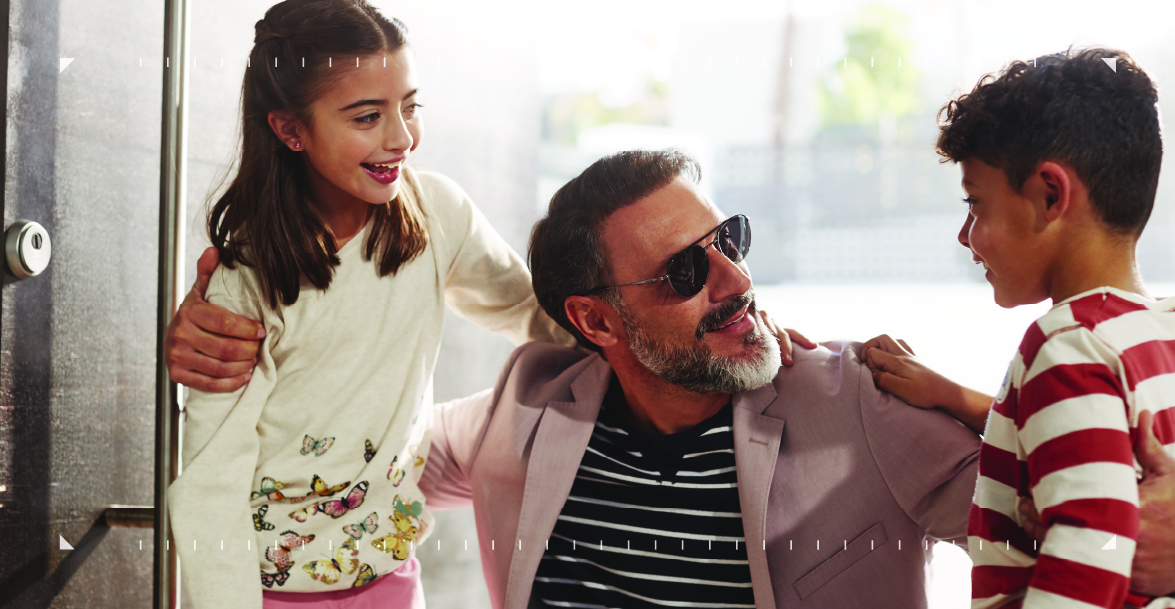Children need UV eye protection just as much as adults. Here's why: too much sun exposure increases the risk for vision problems and conditions later in life, such as cataracts and macular degeneration. This risk increases with exposure to sunlight over a lifetime.
The best way to protect a person’s eyes from UV radiation damage and vision loss later in life is to begin dispensing high-quality sunglasses for children at an early age, whether they need a prescription or not.
None of that is new information, so to arm your practice for sun season, we’ll cover some information on the science behind sun exposure for children and the features and functionality for patients to consider in sunglasses.
The science behind protecting children's eyes
Kids are exposed to more ultraviolet (UV) light than adults, but the question is, what’s behind this?
Children usually spend a lot of time outdoors (more than adults) playing sports, going to friends' houses, which all increases their exposure to UV light and risk of sun damage to the eyes. Large pupils and less natural filtering of UV and high-energy visible (HEV) light allow more harmful rays to penetrate deep into the eye during childhood.
Unfortunately, many parents remain unaware of the importance of sunglasses for children and this part of their eye care falls by the wayside. According to a 2016 Vision Council survey, kids generally receive three times the annual sun exposure of adults, and their young eyes are especially susceptible to UV-related harm. This increased risk hasn’t translated to increased protection – 56 percent of parents report wearing sunglasses always or often, but only 29 percent of parents say their children always or often wear shades.
It’s important to educate your patients with children on the protection sunwear offers and how vital it is for all ages. These talking points can get you started:
- The sun emits UV light and blue light—100x more blue light than indoor lights.
- The cumulative effects of blue light over a lifetime increase the risk of retinal damage.
- UV and blue light increase by 8% with every 1000 feet in elevation.
- 50% of exposure to UV light occurs by the time children reach 18.
Discuss kids' eye protection and eyewear in detail so your patients know the benefits to their lifetime eye health. Download our sun protection white papers to get the conversation started.
Checklist: features of kids' sunglasses
These are the features every parent should consider for their child when choosing high-quality prescription (or non-prescription) sunglasses.
100 percent UV protection
There are two types of ultraviolet rays from sunlight that can damage the eyes: UVA and UVB. For adequate eye protection, sunglasses for children should block 100% UVA and UVB.
HEV (blue light) protection
Like UVA, high-energy visible (HEV) light can penetrate deep into the eye and increase the risk of retinal damage. While many adults face blue light concerns from time spent in front of a computer working all day, children are more exposed to the outdoors.
Coppertone polarized lenses filter up to 2X as much solar blue light as a standard polarized lens. Sunglasses for kids should block as much HEV as possible. Here are some specific benefits of polarized sunglasses:
- Safer driving from less glare
- Less eye strain symptoms in bright sunlight
- Great protection (with trivex or a polycarbonate material)
- Less glare and better visibility below the surface of the water when out on the lake
- Less glare and strain when skiing or traveling in the snow
- 100% protection from the sun’s harmful UV rays
Read our white paper, Why Go Polarized, to help you explain to your patients the benefits of kids polarized sunglasses and polarized lenses for adults as well.
Protective materials
Choosing the right material for UV and HEV protection is important. Generally, Phoenix and polycarbonate lenses are the go-to for children’s sunglasses. They automatically block 100% of UV light without any additions. They also have the added benefit of increased safety from eye injury and reduced weight.
A note on sunglasses functionality
Bulky glasses that aren’t comfortable to wear create an uphill battle for parents trying to get their children to wear sunglasses. It’s important to work with the parents on the features they want and the children on what kids' eyewear is comfortable to them.
A comfortable tint
Darker tints don’t necessarily mean more protection. Lenses can block 100% of UV and a large portion of blue light in any tint, depending on the features. Focus on comfort without giving up the functionality.
A durable, close-fitting frame
Kids are active and tend to stay busy, which means one pair of sunglasses doesn't suffice for all areas of life. After-school sports or just an active lifestyle may warrant a “sport” frame. These frames offer increased protection and are a worthy addition to any eyewear toolkit.
Shade is misleading
Remember to emphasize this for your patients (kids and parents): shade doesn't stop UV rays. And regardless of haze or clouds, it’s essential for kids to wear their sunglasses each day when they are outdoors.
Looking for more in-depth information on sunglasses for children? Our white paper dives deeper into the topics we covered here today, revealing more of the science behind why children need sunglasses and the features to provide adequate protection.


